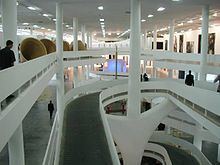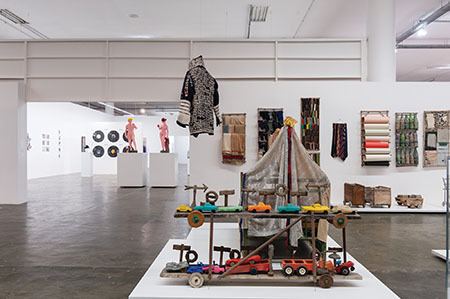Begins 1951 | ||
Frequency biennial, every two years. Similar Ibirapuera Park, São Paulo Museum of Modern Art, São Paulo Museum of Art, São Paulo Fashion Week, Pinacoteca do Estado de São P | ||
The São Paulo Art Biennial (Bienal in Portuguese) was founded in 1951 and has been held every two years since. It is the second oldest art biennial in the world after the Venice Biennale (in existence since 1895), which serves as its role model.
Contents
- History
- Format
- Argentina
- Australia
- Austria
- Belgium
- Canada
- Colombia
- Germany
- Ireland
- Italy
- Japan
- Poland
- Portugal
- Spain
- Switzerland
- United Kingdom
- United States of America
- References

History

The Biennial was founded by the Italian-Brazilian industrialist Ciccillo Matarazzo (1898–1977). Since 1957, the São Paulo Biennial has been held in the Ciccillo Matarazzo pavilion in the Parque do Ibirapuera. The three-story pavilion was designed by a team led by architects Oscar Niemeyer and Hélio Uchôa, and provides an exhibition space of 30,000 m². The São Paulo Bienal features both Brazilian and international contemporary art and is considered to be one of the most important large-scale art exhibitions in Brazil and South America.

After completing the 6th Bienal, the Fundação Bienal de São Paulo was created to take the exhibition forward, which until then had been organized (with great success) by the Museu de Arte Moderna de São Paulo - MAM-SP. And the pavilion the institution occupies - its home to this day - only began holding the Bienal exhibitions starting with its 4th edition in 1957. Since 1951, dozens Bienals have been produced with the participation of 159 countries, more than 13 thousand artists, close to 60 thousand works, and almost 7 million visitors, making direct contact possible between the Brazilian public and the visual, theatrical and graphic arts, music, film, architecture, and other forms of artistic expression from around the world. The 1998 edition cost almost $12 million and drew nearly 400,000 visitors during a two-month run. The 25th biennial was originally scheduled for 2000 but was delayed to 2002 after a gigantic exhibition marking the 500th anniversary of Brazil's discovery by the Portuguese was organized by former biennial president Edemar Cid Ferreira and booked into the Ciccillo Matarazzo pavilion. That year, for the first time, the chief curator of the biennial was a foreigner, Alfons Hug from Germany.
The biennial's initial aim was to make contemporary art (primarily from Western Europe and the United States) known in Brazil, push the country's access to the current art scene in other metropolises, and establish São Paulo itself as an international art center. Naturally, the biennial always serves to bring Brazilian art closer to foreign guests.
Format

Like its Venetian role model, São Paulo used to host national presentations as well as international exhibitions held under the direction of rotating chief curators. Since 2004, there have been national presentations.
Argentina
Australia

